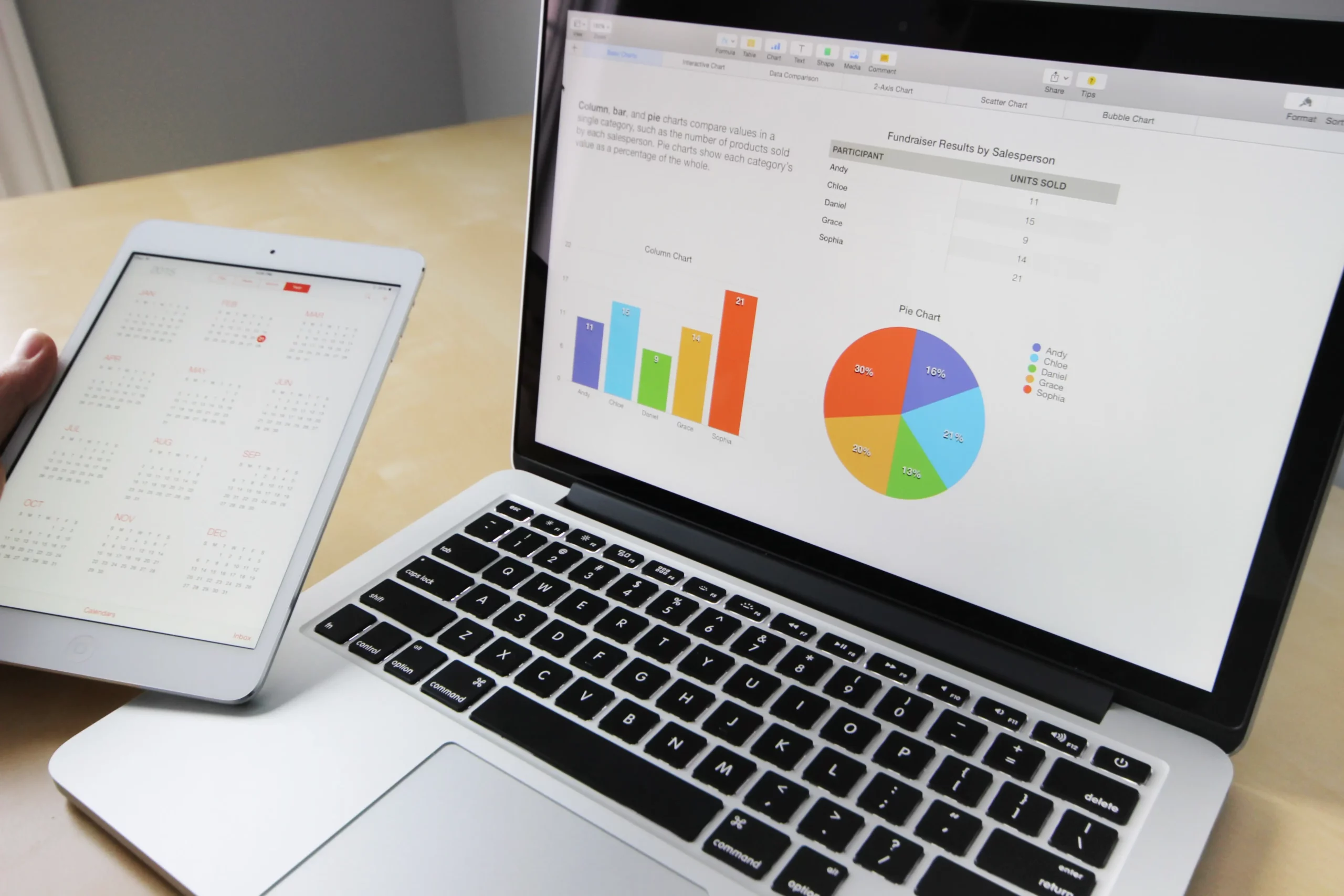The balance sheet is a snapshot of what your business owns, owes, and the amount invested by its owners in one day. The information provided can help you better understand how financially stable or not an entity might be in comparison with others within similar industries. Start by looking at specific key performance indicators (KPIs) to get the most out of your balance sheet.
Two Key Performance Indicators (KPIs) to start assessing your balance sheet are:
1) The Current Ratio
2) Cash Converting Cycle
Why these 2? Because they deal with liquidity and cash flow. Without liquidity and cash flow, you will not be able to grow or meet your short-term obligations.
The Current Ratio.
The current ratio is a liquidity metric that measures the ability to pay short-term obligations. It tells the business owner how much cash a company has on hand, which can be used for debt repayment or other expenses due within one year from now.
When calculating this number, it’s important to look at your total assets and any borrowings against those items, so you know exactly where the money goes!
A company’s current ratio is the most common way for the business owner and lenders to assess its financial health. A high number may indicate that management isn’t using their assets efficiently, while a low one points towards distress or potential default on loans!
What is a Good Current Ratio?
The current ratio measures how much money you have compared to your debts. A good number would be anything over 1, with 2 being the ideal and 3 considered highly high for most companies in industries where trade payables are typically higher than trade receivables (think supermarkets).
It’s important because it tells creditors that there will always be enough assets on hand if they demand their payment right away, but just as importantly–and this may seem obvious-if something goes wrong, then at least some cash can still go into circulation before things collapse!
How do I calculate the Current Ratio?
To find your current ratio, divide your assets by your liabilities like so:
Limitations of the Current Ratio
Of course, the current ratio isn’t a magic bullet. It’s simply one number that cannot accurately picture your company’s financial health by itself – there are many factors to consider outside this single measure! The truth about liquidity and solvency is much more complex than what meets the eye, so it’s essential to consult with an accountant or financial advisor.
Now that we understand the current ratio let’s move on and talk about the cash conversion cycle!
What is the Cash Conversion Cycle?
The cash conversion cycle (CCC) measures the days a company takes to convert its inventory/services into cash. In other words, it’s assessing how quickly a business can turn the cost of selling a product/service into cash.
The CCC is important because it helps business owners track their working capital needs and ensure they have enough cash to cover short-term expenses. It’s also an excellent way to compare your company’s performance with others in its industry.
What do I Need for the Cash Conversion Cycle?
We use three Numbers as a starting point: Inventory, Accounts Receivable, and Accounts Payable. If you don’t carry inventory, then you will discard that amount.
How to use the Cash Conversion Cycle
The cash conversion cycle is expressed in days, so to calculate this, you will need to determine how long it takes to collect your accounts receivables in days, how long your inventory sits on the shelf in days, and how often you pay your bills in days.
Inventory Days, how to Calculate it, and What it Tells you.
Inventory days formula = (Average Inventory(number from the Balance sheet)/Cost of Goods Sold) X 365 days
So what is the magic number? That depends on the industry. This formula tells you how long it takes on average to convert your inventory into cash, a low number could indicate that you either carry too much inventory, and a too high number could indicate that you don’t have enough and are losing out on sales.
Accounts Receivable Days
A business can identify whether or not its credit processes are efficient and if there needs to be some work done in this area with increased efficiency! Account receivable days are an essential measure of a company’s financial health. It helps them estimate their cash flow and plan for short-term future expenses by measuring how long it takes customers to pay back what they owe (AR Days).
Payment terms can have a significant impact on AR days. For example, nearly 50% of construction and oil companies get late payments which leads to significantly higher numbers when compared with retail or service industry segments; this means you cannot compare two businesses from different industries who use credit cards for their business transactions because the latter will likely experience more extended payment periods than those in our sample set–this may lead them losing out on potential customers due solely based off how strict (or liberal) those offered by each company might be about allowing debt obligations beyond what’s manageable given current economic conditions!
How to Calculate Accounts Receivable Days
Accounts Receivable Days = (Accounts Receivable / Revenue) x 365
What is a Good Accounts Receivable Days Number?
This depends on your industry. Here is another way to look at it.
Determine your payment term, meaning when you send out your invoices, is it net 30? Once you have determined the payment terms, if your accounts receivable becomes 25% or more of your payment term, it is worth looking into it.
Accounts Payable Days
Accounts payable days are also referred to as days payable outstanding, a financial ratio that reveals the average number of days of credit the organization has to pay invoices and suppliers. The accounts payable days show the number of days it takes an organization to pay suppliers.
Understanding the Accounts Payable days reflects current AP workflows. Determining where to improve efficiencies ensures timely payments and helps the organization save money. For example, late payments can lead to costly fees and penalties and damage supplier relationships.
How to Calculate Accounts Payable Days
(Average Accounts Payable/Cost of Goods Sold) X 365 days.
What are Good Accounts Payable Days?
Generally speaking, the longer you take to pay, the better it is because it means you can access the funds needed to pay the bills by collecting from your customers before paying the bills. Taking too long to pay can cause late payment penalties and disruption in your work because vendors don’t want to sell to you on credit until you are paid up. The payment policy should also consider volume discounts.
How do I calculate the Cash Conversion Cycle?
To calculate your company’s cash conversion cycle, you need to know three things:
1) The number of days it takes to sell your inventory (inventory turnover days),
2) The number of days it takes to collect payment from customers (receivables days), and
3) The days you must pay your suppliers (payables days).
Once you have those numbers, you can plug them into this formula:
CCC = Inventory Days + Receivables Days – Payables Days
What is a Good Cash Conversion Cycle?
According to a publication from JP Morgan, an average cash conversion cycle is around 60 – 70 days but varies between industries. Use this study to compare your cash conversion cycle to more prominent players in the same industry.
Conclusion
If you need help with analyzing your financials, please feel free to contact me below. I will be happy to schedule a free consultation with you.





